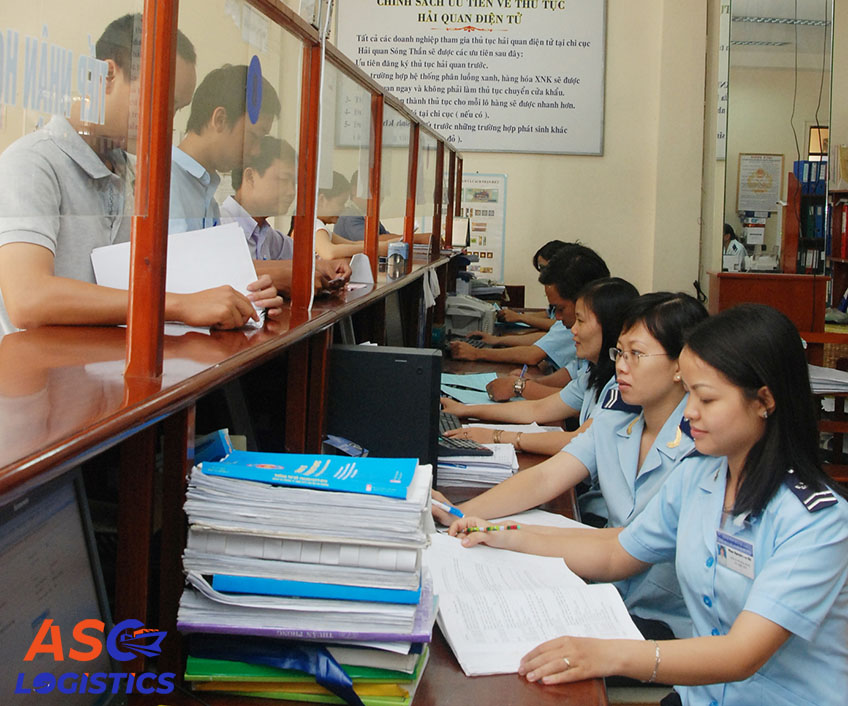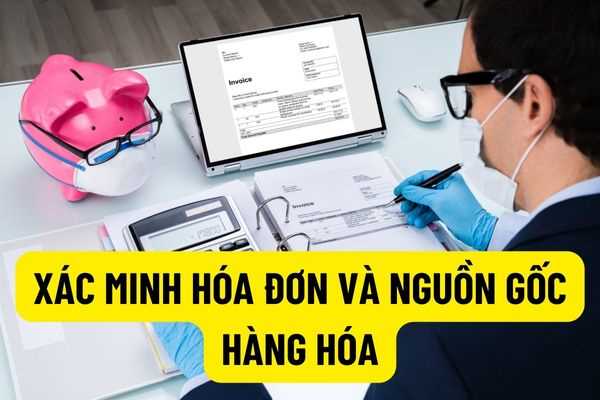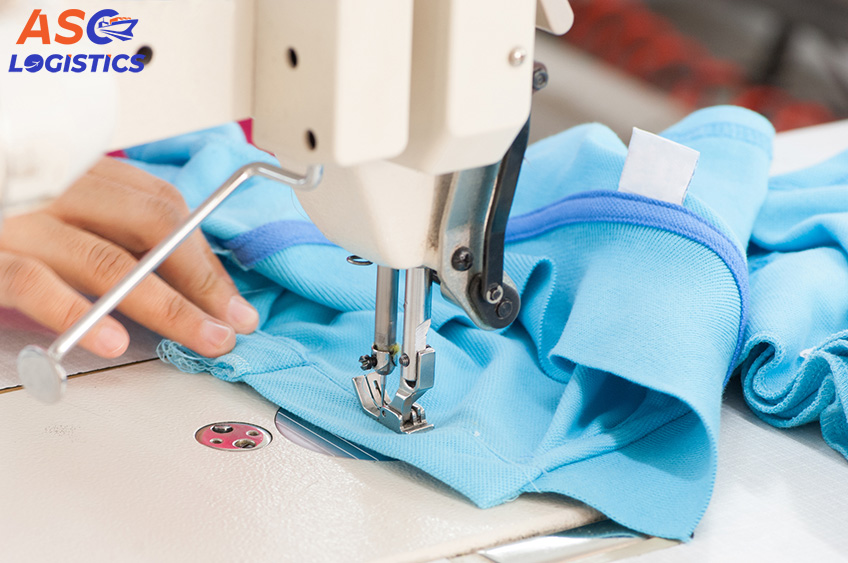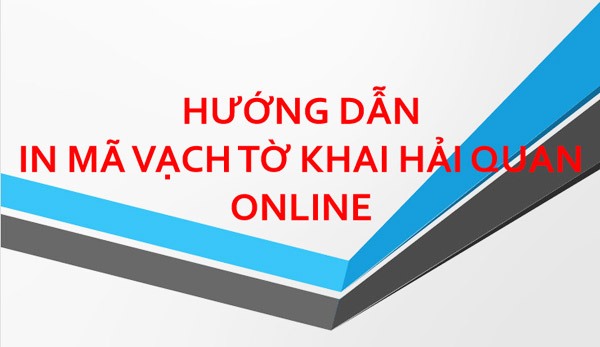CUSTOMS PROCEDURES FOR BEGINNER
ASC Logistics introduces detailed steps to be taken when carrying out customs procedures. Of course, within the framework of an article can not say all the cases, but only what is popular, most typical.
First of all, the steps are somewhat different between shipment and shipment, Sea cargo and Air shipment. Below is the procedure for shipment entry for the type of business. This case is often more complicated, somewhat more complicated, and also more inquisitive.

Step 1: Prepare the goods document
When you do customs, you need to prepare the documents. Starting from the Foreign Trade Contract, which specifies relevant documents such as Commercial Invoice, Packing Details, Bill of Lading, Certificate of Origin, Certificate of Quality ...
When there is a file, you can check the validity of the documents. If it is not reasonable to work with the foreign seller to explain, or if necessary, the amendment should immediately.
In this step, you can easily adjust the details, content is not appropriate. If it's time for the seller to send the original courier, then the change will be more difficult, time consuming, and often costly.
Therefore, you should be careful in checking the validity, validity, and completeness of the documents.
Our process experience shows, caution at this step will help you to import procedures more convenient.
But how to check ?
For newcomers, it is also difficult, because something is new. You must study hard to understand first. There are two things you need to prepare for the first time:
First, find out about the relevant documents, which means you have to understand what the document is, what it is used for, and what is important about it.
Here are the articles I have written about some important import-export documents that you need to preview:
- + Sales Contract
- + Commercial Invoice
- + Packing List
- + Bill of Lading
- + Certificate of Origin
There are also other documents that your shipment may need such as: CQ, CA, Fumigation Certificate ... Meet any kind must study it, if you do not want to make mistakes.
/L%C3%A0m%20th%E1%BB%A7%20t%E1%BB%A5c%20h%E1%BA%A3i%20quan%20cho%20ng%C6%B0%E1%BB%9Di%20m%E1%BB%9Bi%20b%E1%BA%AFt%20%C4%91%E1%BA%A7u/Lam-thu-tuc-hai-quan-cho-nguoi-moi-bat-dau-4.jpg)
Second: After checking the information and data on each document, you need to cross-check the data between the documents to ensure consistency and accuracy. Pay special attention to Invoice and CO (if there are special tax incentives, such as D, E, KV, JV ...)
Some details to compare such as:
- + Name of goods, description, unit price, quantity of goods on Invoice, Contract
- + Packages, Gross Weight on B / L and P / L ...
- + With CO, you have to check the details. You check each box, and compare with other documents such as B / L, Invoice, Packing List ... It is best not to worry. False tax is easy to lose, because they are not entitled to special incentives.
After reviewing and coordinating with the seller to make corrections (if needed), you have a good set of records.
Basically, we are confident in the next procedure.
Step 2: Prepare digital signature, register with General Department of Customs
Most businesses now use digital signatures to file tax returns. Your company can use your existing digital signature, no need to buy more.
For newly established businesses, new numbers should be purchased. You should choose from major brands such as Vietel, VNPT, FPT ...
After completing the purchase, you need to register the digital signature with the General Department of Customs to be able to transmit electronic customs declaration.
In theory, people can completely view the guide and register themselves.
But reading and following the guide is quite time consuming. Many steps are a bit complicated, and easy to miss. Therefore, you should have the signatures provided by the signatory. Even if you have bought before, you can still contact them for help, and usually for free. They do it regularly so it is only 5-10 minutes. If you do it yourself, it will take time and can still be wrong, do not pass the declaration.
In case your company rents customs declaration service, you can also ask
By comparing the self-sufficiency option with the customs service and the digital signature provider, the vendor is selling the digital signature faster. Simply because they do it often.
If you decide to do it yourself, then you need to register signature number 2 seats (same with the General Department of Customs):
Register for a business they do, free of charge or free of charge on each side of the digital signature: to be able to transmit container / seal number, CO ... Done, wait a few hours is the system update.
Registration to use the VNACCS system: to transmit the declaration, but often have to wait until the next day to use this feature.
The self-registration step, you can see in the Guide on the website of the General Department of Customs.
Once the registration number is completed, you need to install the software to declare and transmit the customs declaration as I presented in the next steps.
/L%C3%A0m%20th%E1%BB%A7%20t%E1%BB%A5c%20h%E1%BA%A3i%20quan%20cho%20ng%C6%B0%E1%BB%9Di%20m%E1%BB%9Bi%20b%E1%BA%AFt%20%C4%91%E1%BA%A7u/Lam-thu-tuc-hai-quan-cho-nguoi-moi-bat-dau-2.jpg)
Step 3: Install VNACCS customs declaration software
To declare e-customs, you can use the software of the technology companies recognized. According to an article on baohaiquan.vn, the company qualified as:
- + FPT FPS Information System Co., Ltd;
- + Thai Son Technology Development Co., Ltd.
- + G.O.L. IT Trade Services Co., Ltd.
- + Softech Corporation;
- + TS24 Joint Stock Company
Step 4: Registration for specialized inspection (if any)
The specialized inspection of import and export goods is the collection of samples by the competent authorities to ensure that the goods are eligible for export or import.
Some types of specialized examination are common with imports: quality control, medical quarantine, culture, animal quarantine, plant quarantine, food safety ...
For exports, it is necessary to base on the contents of the foreign trade contract to carry out specialized examination procedures as appropriate. For example: plant quarantine, fumigation ... Usually it is optional under the agreement between the buyer and the seller, not the condition required when customs clearance.
Imports are different. For each specific item, the goods owners shall base themselves on the current regulations to know whether they are subject to specialized inspection or not. You should be aware of this problem, to avoid the risk of time and costs.
Verification of quality, has been confirmed
If your goods do not need specialized inspection skip this step.
In case of goods subject to specialized inspection, you need to make a registration dossier with the inspection agency as prescribed, for example:
- + Phytosanitary
- + Animal quarantine
- + Inspection of food safety and hygiene
- + Quality inspection
- + Registering motor vehicles, specialized motorcycles
The registration file with each requesting agency is different, so I can not elaborate here. You have to understand the rules and guidelines to do it. You can find a list of legal documents on customs procedures to find documents related to the item you intend to import.
The time of registration is after Arrival Notice of the carrier, usually before the ship to 1-2 days.
After receiving the dossier and considering it fully complete, the specialized agency shall issue the registration number and date. Typically, they write & stamp the confirmation box on the registration form you submitted. With this voucher in hand, you can move on to the next step.
Step 5: Declaration and transmission of customs declarations
After receiving the Carrier's Notice of Arrival, you can go to the declaration form.
Using the customs declaration software that you have installed, enter the information and data of the shipment on the declaration. You can refer to the instructions on the declaration of Thai Son Software Co., to know how to do.
Once you have all the necessary parts of the declaration, and check it for sure, you can pass the declaration. The declaration will be issued.
After the transmission, you need to check again again important information such as: type code, customs department code, store location code for clearance ... Note: if the information is wrong, many Your ability to cancel your declaration, not transfer it as other information.
>> Download the encoding: customs department, storage location, port code ...
Also, you should check the amount of tax payable, if necessary, recalculate by pocket calculator, or Excel file. My team uses Excel file formulas to check the amount of tax to pay quickly. It will help people to feel more secure.
After the official transmission, the declaration will be automatically distributed by the system:
Green : The system has cleared customs, needs to pay taxes and go to customs supervision to complete the procedure.
Yellow: Customs will check the paperwork
Red: customs will check the paper records, then check the actual goods
Now print your declaration and move on to the next step.
/L%C3%A0m%20th%E1%BB%A7%20t%E1%BB%A5c%20h%E1%BA%A3i%20quan%20cho%20ng%C6%B0%E1%BB%9Di%20m%E1%BB%9Bi%20b%E1%BA%AFt%20%C4%91%E1%BA%A7u/Lam-thu-tuc-hai-quan-cho-nguoi-moi-bat-dau.jpg)
Step 6: Get the delivery order
Delivery order is a document issued by the shipping company (shipping company, forwarder) to instruct the shipper (port, warehouse) to deliver to the owner. Delivery Order, usually abbreviated as D / O.
Delivery order is an important document to carry out procedures at the port when inspecting, taking samples for specialized inspection, and when taking goods.
If you notice on the arrival notice, you will see the necessary information such as:
- + The name, address and telephone number of the issuing unit.
- + The original bill of lading must be presented
- + The amount of fees to pay such as document fee, CIC, EBS ... (many firms do not write fee information)
- + You arrive at the carrier's address on the newspaper, holding the documents and fees.
Each firm requires each other, but basically, keep the following documents:
- + Identity card: 1 copy
- + Bill of lading: 1 photocopy (should be full on both sides). Many companies have photo copies available, but some shipping companies (eg SITC) ask the owner to bring a photo B / L to stamp them, get the customs documents.
- + Original bill of lading (if any): 1 copy. Note: there should be the company director sign + stamped & marked title on the back of the original bill of lading; If not, many will require to submit all 3 originals.
- +Fees: pay at the bank (the staff sitting at the shipping company, or nearby).
With Full Container Loaded (FCL), if the goods have been returned to the port for Free Demurrage free of charge, you will need to pay an additional fee to extend the delivery date. Rates vary depending on the type of container, according to the manufacturer, but roughly the initial range is: 200-300k / 20'DC; 400-450k / 40'DC. The longer port stays, the higher the premium.
Ordering procedure is not too difficult, but it's a little bit more complicated, yet each one is different. If you are not used to it, then go to it, asking where to ask it.
Additional Notes: You need to distinguish between the Forwarder Order and the Shipping Order, corresponding to House Bill of Lading (HBL) and Master Bill of Lading (MBL).
If your company is a consignee on your carrier's Master B / L, just go to the shipping lines to get the order.
If you use House B / L, you will get orders at the freight forwarder for their order. They can then authorize you to switch to the liner carrier and place the container liner. Many times, the forwarder has already ordered the shipping line, then you just need to shell shipping company is finished.
Here you have completed the steps to take delivery orders.
Step 7: Prepare customs dossier
Depending on the flow of declarations, the documents should be prepared differently.
Green Flow Request:
... just print the declaration on the software brought to customs supervision to complete the procedure. However, according to my experience, for sure, you have to bring along the documents as required by the Yellow Flow (below), in case customs ask for more.
Yellow Flow declaration:
Customs dossier includes:
- Letter of introduction of the company
- Customs declaration: 1 print from the software
- Commercial Invoice: 1 copy
- Bill of Lading: 1 snapshot, with business stamp + shipping company seal (shipping company or forwarding company)
- International Freight (if ExWork, FOB): 1 copy
- Certificate of Origin: 1 original (if any)
- Registration for specialized inspection (if goods must be inspected): 1 original with certification of specialized agency
- Other documents (if any, depending on type of goods): Certificate of Quality (CQ), Certificate of Analysis (CA), Health Certificate
- In addition, you should also have a copy of the other documents available for reference or presentation, as needed: Sales Contract, Packing List, and related documents such as catalogs. , images, technical documents ... of the shipment. The principle is: the more complete the document, the more convenient the procedure.
Red Stream Declaration:
... prepare vouchers for two professional phases:
Customs inspection: you prepare as the gold I just mentioned above.
Customs inspection of goods (inspection): additional documents need to be cleared for inspection at the port or warehouse. You are prepared to add: referral, delivery order (still) was taken in the above step.
After preparing the documents, you bring down the customs department to do the procedures.
/L%C3%A0m%20th%E1%BB%A7%20t%E1%BB%A5c%20h%E1%BA%A3i%20quan%20cho%20ng%C6%B0%E1%BB%9Di%20m%E1%BB%9Bi%20b%E1%BA%AFt%20%C4%91%E1%BA%A7u/Lam-thu-tuc-hai-quan-cho-nguoi-moi-bat-dau-3.jpg)
Step 8: Do customs procedures
At this step, also follow the stream declaration which do the corresponding work:
Green Flow Request:
You only need to pay import tax & VAT, print the declaration brought to the customs supervision to complete the procedure. However, in my experience, there are still cases where customs suspect, and ask more details about the shipment. So, for sure, you bring with you copies of other documents such as Invoice, Packing List, B / L ..., in case customs inquiries are available explanations.
Yellow flow declaration:
- Customs clearance at the department
- Customs officers will check the paperwork. There are some good situations:
- Customs clearance at the department
- Customs officers will check the paperwork. There are some good situations:
Standard profile, nothing more to ask. Customs clearance and clearance
Customs officers see the records, find the points are unclear, not reasonable, and questioned. You must explain, and provide additional documentation if needed. If they are satisfactory, they will be cleared, so it is done.
If there are problems, you explain but not reasonable, customs require you to correct the declaration. Then, you need to transfer the declaration on the software. Ideally, anyone in the office should be quick to deliver, while you remain in the office to keep pace. If the customs officer finds the declaration correct, they will be released to you. If it is not reasonable, or if the other contents are found, the steps repeat as above, until complete.
If your documents and explanations are not sufficiently convincing customs, or if there are grounds to suspect fraud in the declaration, customs officers may report and suggest to the transfer manager. direct inspection of goods (Red Line inspection, details are in the section below). This situation is rare, but it can happen, especially with the new shippers first time, with the sensitive goods, the risk of fraud is high. If you fall into this situation, you also calmly seek to explain as much as possible, to avoid being transferred. If you do not try to do it, then do not check it out. The steps are as in the next section.
Red Stream Declaration:
In this channel is unfortunately, the owner will take effort and cost more. Make it known!
First of all, customs will check paper records, just like with the yellow channel mentioned above. If you need to ask, edit the declaration, you also have to finish.
Then, when the records and the declaration are valid, the receiving customs office will transfer to the physical inspection department (often referred to as "inspecting").
During the field inspection, either directly or through a scanner, if the customs authorities detect errors in the declaration, such as: missing or incorrect goods ..., depending on the extent of being handled . If there is no problem, return to the customs clearance office for the shipment.
Once you have cleared the customs declaration, the last thing you need to do is print the bar code from the customs office's website, go to the customs office at the port / warehouse to do the paperwork. The customs office uses a bar code scanner, clicks on one, and finishes the paper.
So is customs clearance. You bring the order to the port / warehouse of the port / warehouse to deliver to the cart. Note the orders of the shipping company (with full container), if the order expires, the carrier must renew before changing the order at the port.
To have a professional customs declaration service please contact our hotline: 090.328.8872 (Mr Thang). We wish to serve.
Related Products
Tags: customs procedure


.jpg)

/(Dừa) Thủ tục xuất khẩu nông sản - dừa tươi - dừa kim cương/Thu-tuc-xuat-khau-nong-san---dua-tuoi---dua-kim-cuong.jpg)
/(Sầu riêng) Thủ tục xuất khẩu nông sản - sầu riêng đông lạnh/Thu-tuc-xuat-khau-nong-san---sau-rieng-dong-lanh-2.jpg)




